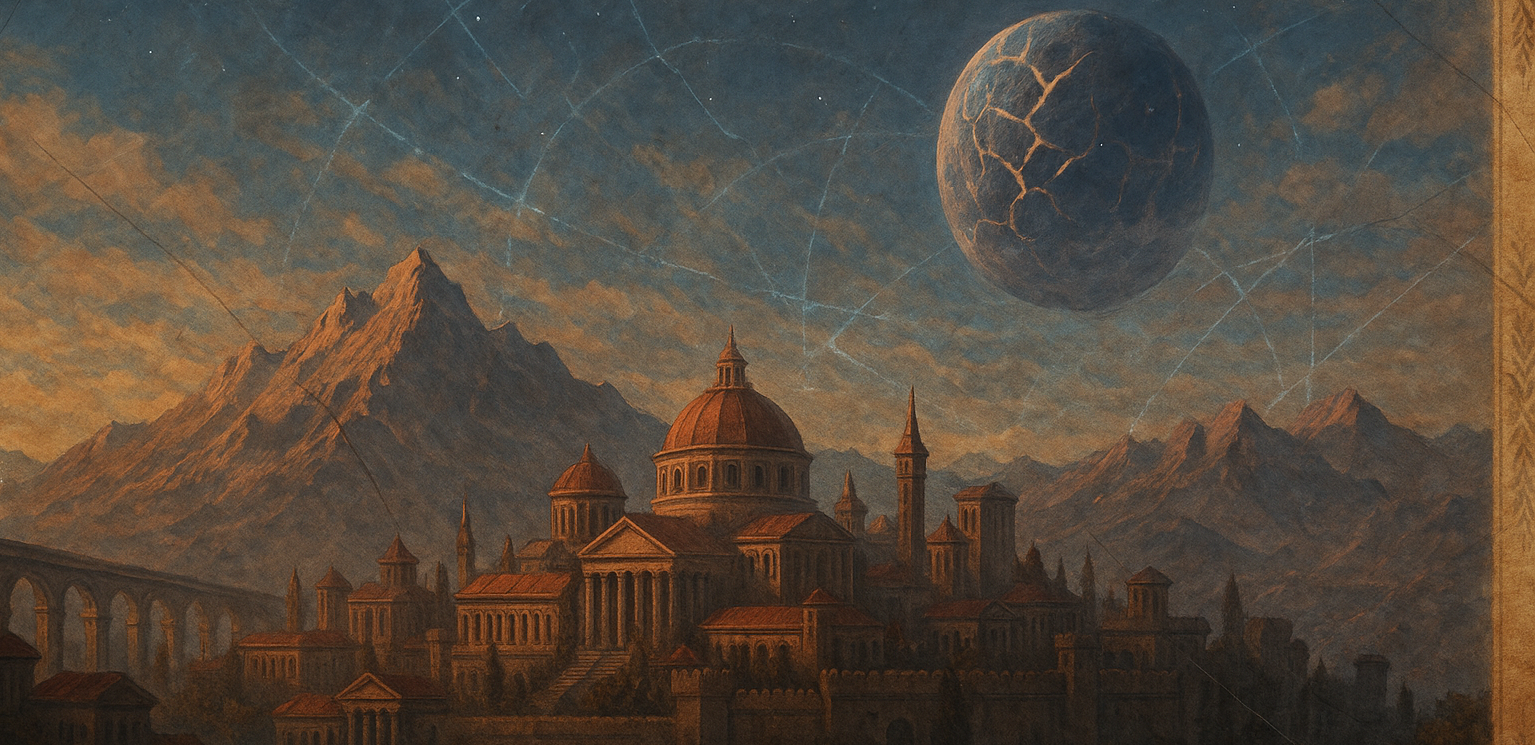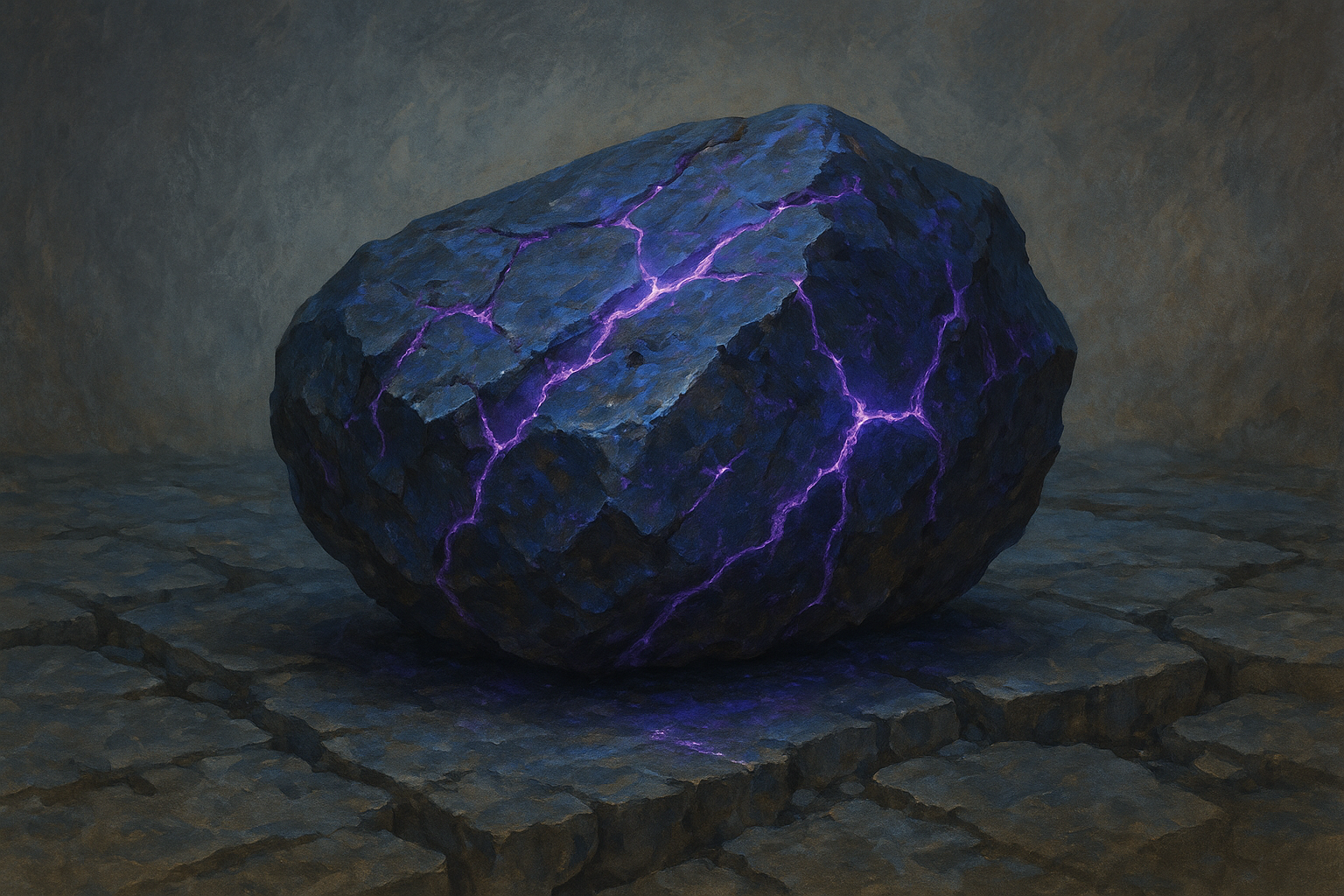Tears of Tharaxis
"The moon weeps, and the world remembers."
The Tears of Tharaxis are tiny, black-violet crystals said to fall like dew from the air when the Rift Moon reaches zenith on certain nights. Their singular, otherworldly scent — a piercing mix of burned cedar, rain-soaked stone, and something faintly sweet — can be detected from dozens of paces. Among the Riftborn, they are considered a sign that the Rift is watching.
Properties
Material Characteristics
In appearance, the Tears resemble shards of obsidian shot through with faint, shifting streaks of violet light. The surfaces are slick and cold, even when touched in the heat of summer. When held to light, faint constellations seem to glimmer within, though no two ever show the same pattern.
Physical & Chemical Properties
- Brittle but unnaturally heavy for their size.
- Warm to the touch despite feeling cold externally — they radiate a low metaphysical energy.
- Faintly luminescent when in proximity to Rift phenomena or leyline breaches.
- Harmless to handle in small amounts but prolonged exposure to their dust induces vivid dreams and mild vertigo.
Geology & Geography
They form only in exposed Rift-scarred areas during the full zenith of Tharaxis. The largest known deposits are in the cliffs near the Rift Scar east of Nova Roma, though Riftborn outposts in the wildlands claim to know secret collection sites as well.
Origin & Source
Believed to condense from the Rift’s breath during lunar zenith. Some claim they are crystallized fragments of the Rift Moon itself; others insist they form where leyline fractures intersect with Riftlight at precise angles.
History & Usage
History
Once considered a curse by early settlers, who blamed the smell for nightmares and hallucinations in Nova Roma’s founding decades. Later, the Arcanii codified their collection and use as harmless in small quantities — though forbidden in ritual use without license.
Discovery
First recorded by Riftwatch sentries in Year 12 AR, who mistook them for weapon fragments left after the First Riftflare.
Everyday use
- Burned in censers during Arcanii rituals to mark the boundaries of doctrine.
- Carried as talismans by some Riftborn for protection against magical drift.
- Ground into ink for ritual signatures by Custodians on containment scrolls.
Cultural Significance and Usage
To the Arcanii, the scent of the Tears has become synonymous with law and ritual, marking solemnity and gravity. To the Riftborn, it is a sacred scent — a reminder that the Rift both gives and takes.
Industrial Use
Ground Tears are used sparingly in ritual inks, wards, and sigil pigments that require attunement to the Rift.
Hazards
Breathing the dust over long periods can induce hallucinations, disorientation, and in rare cases, temporary loss of self — the so-called Moon-Stare.
Environmental Impact
Minimal in controlled amounts. Overharvesting near sensitive leyline nodes can destabilize Riftlight balance in the immediate area.
Distribution
Law & Regulation
Custodians oversee collection and record distribution. Possession in unlicensed quantities is a minor doctrinal offense. Export beyond Nova Roma is forbidden.




Comments